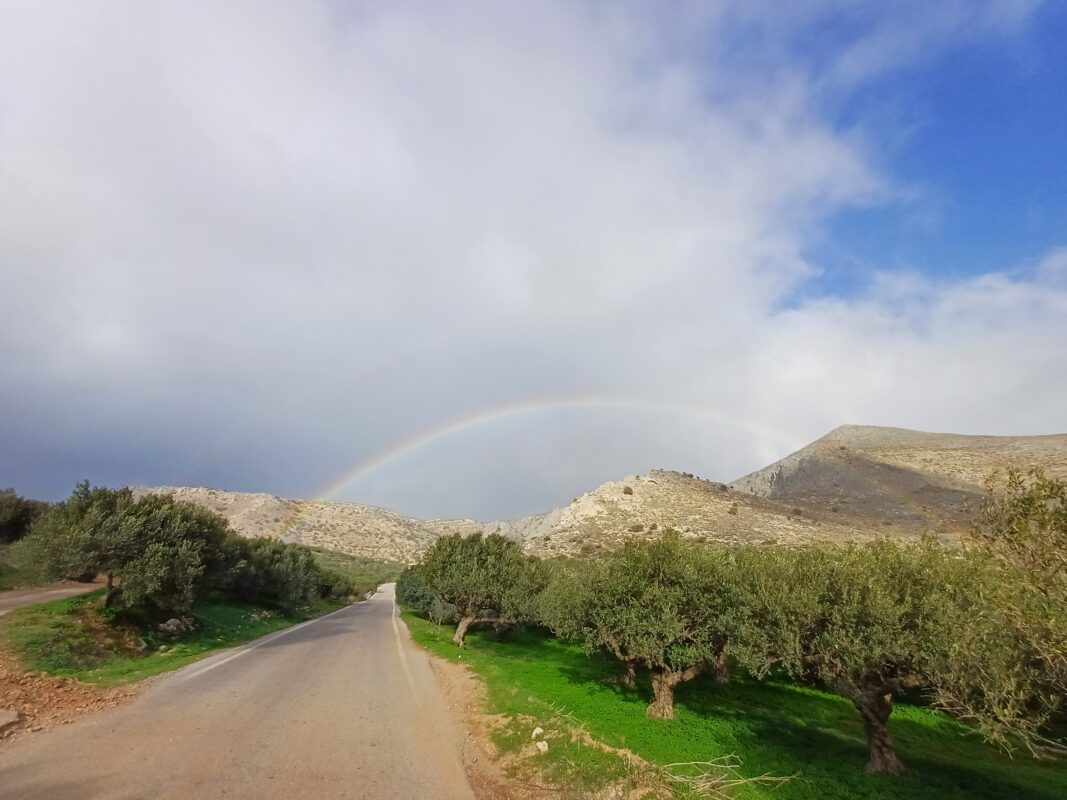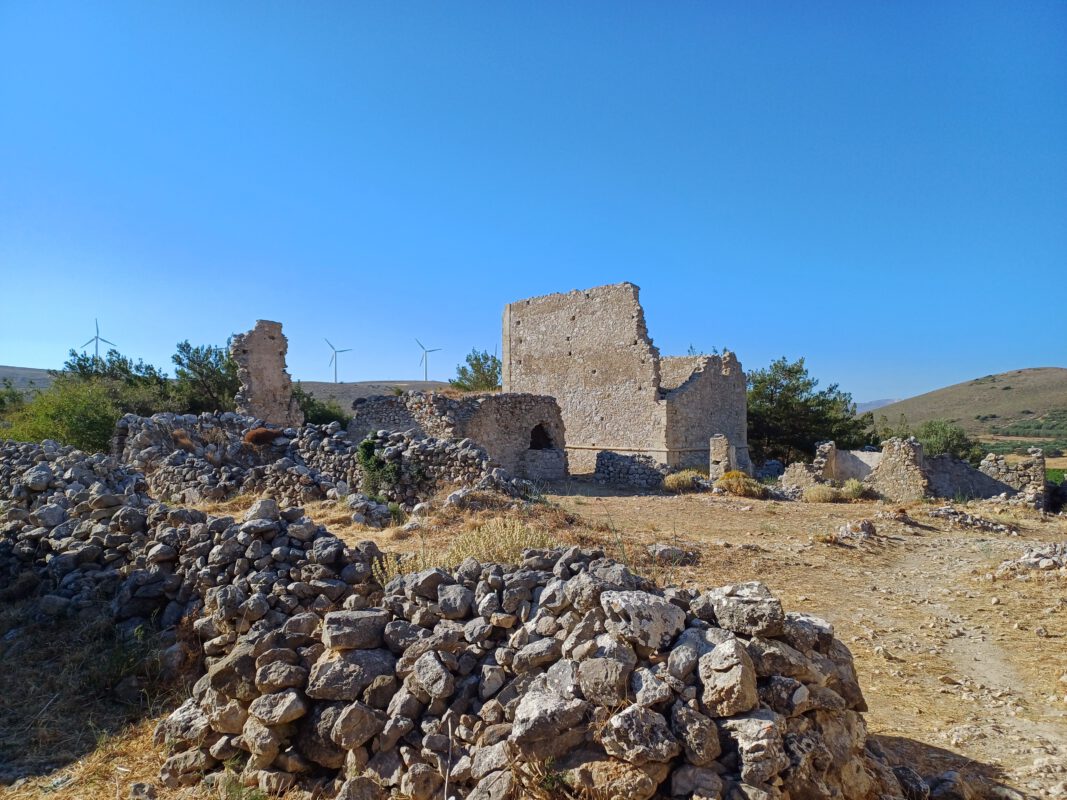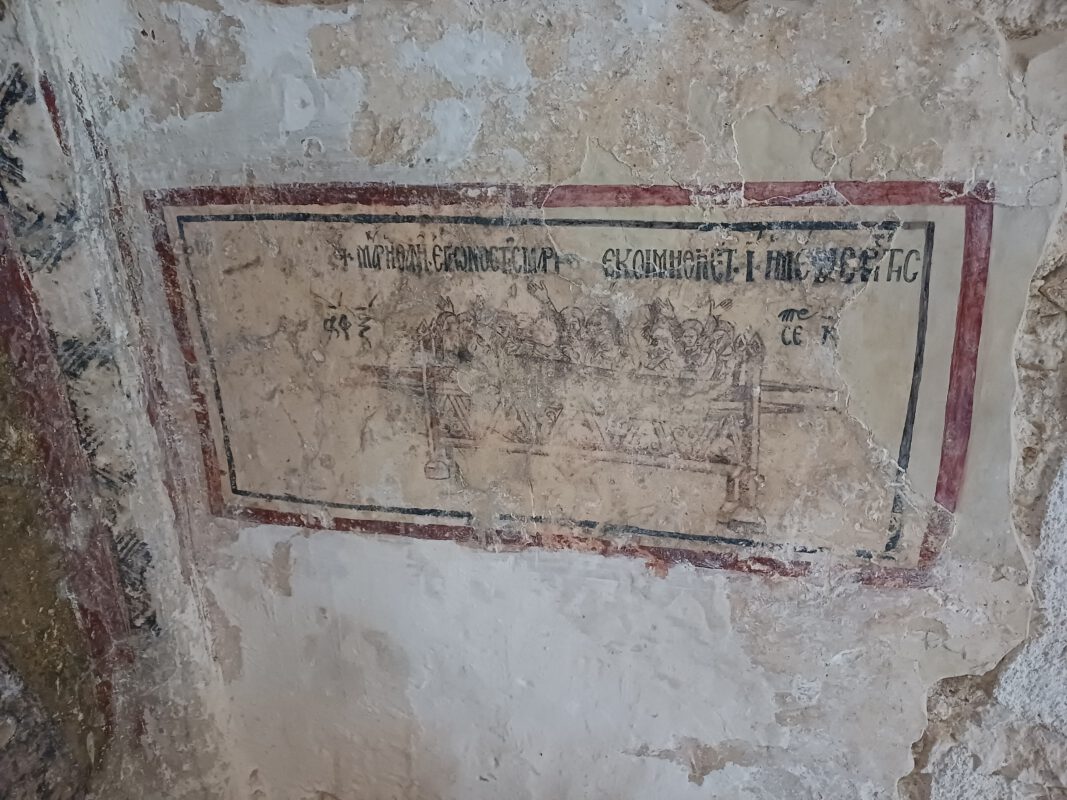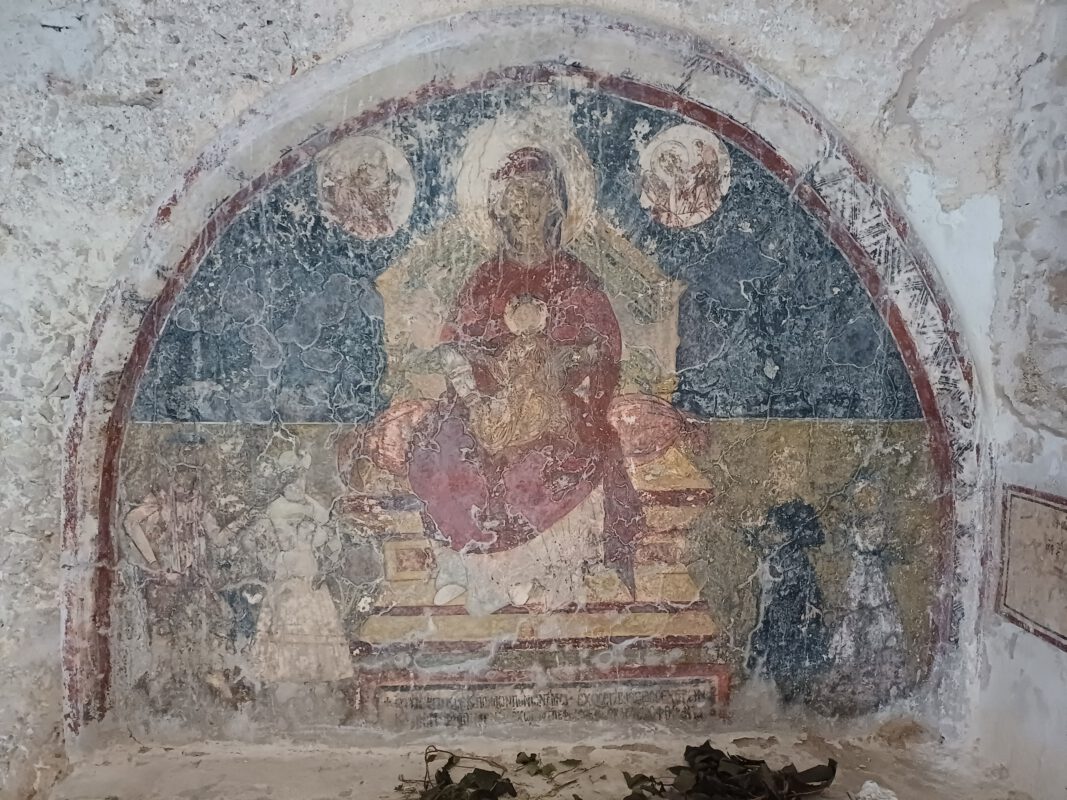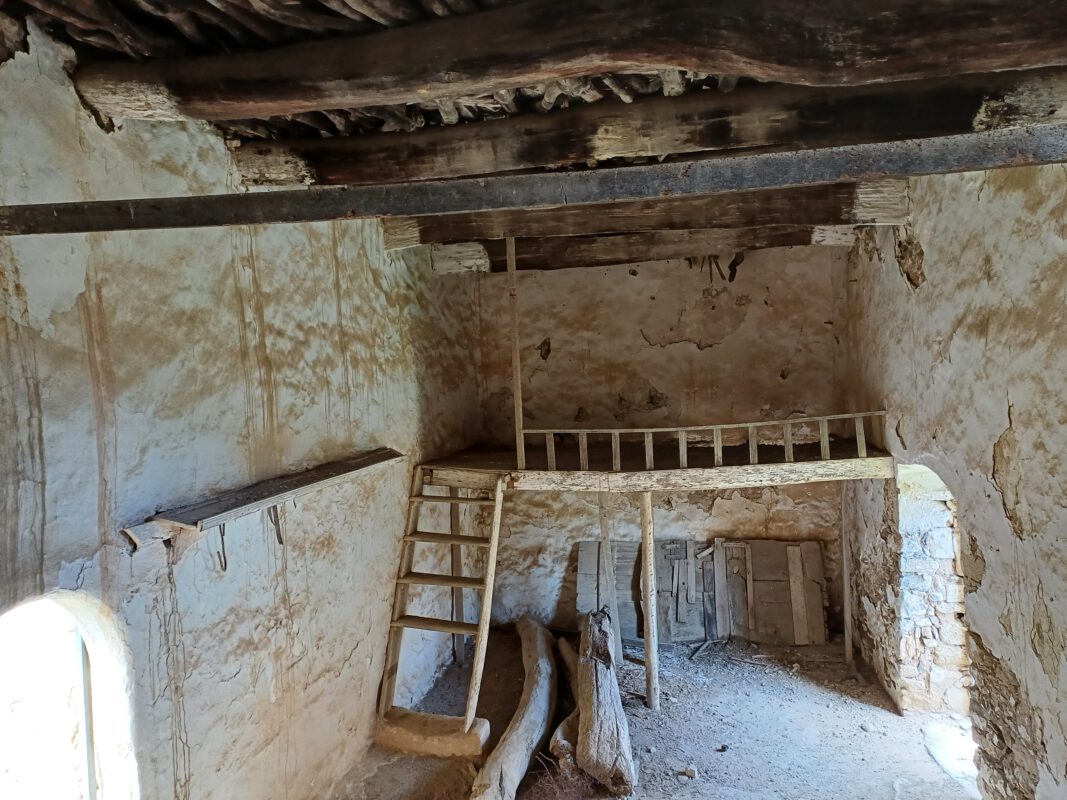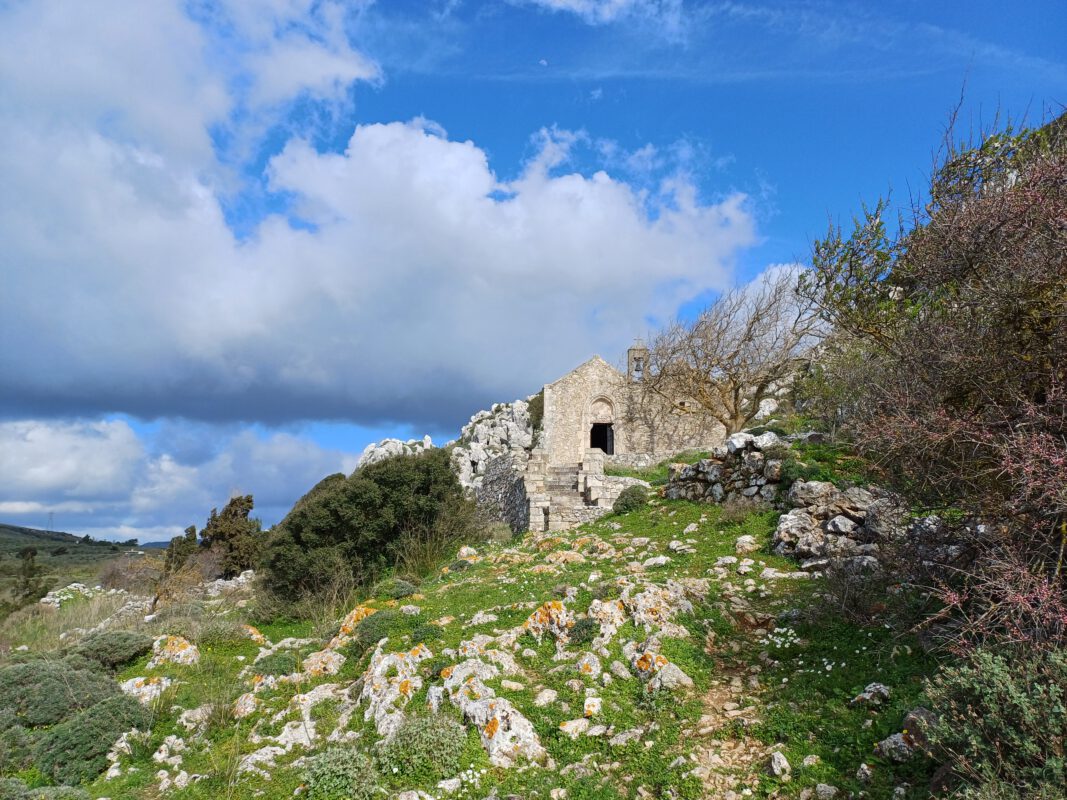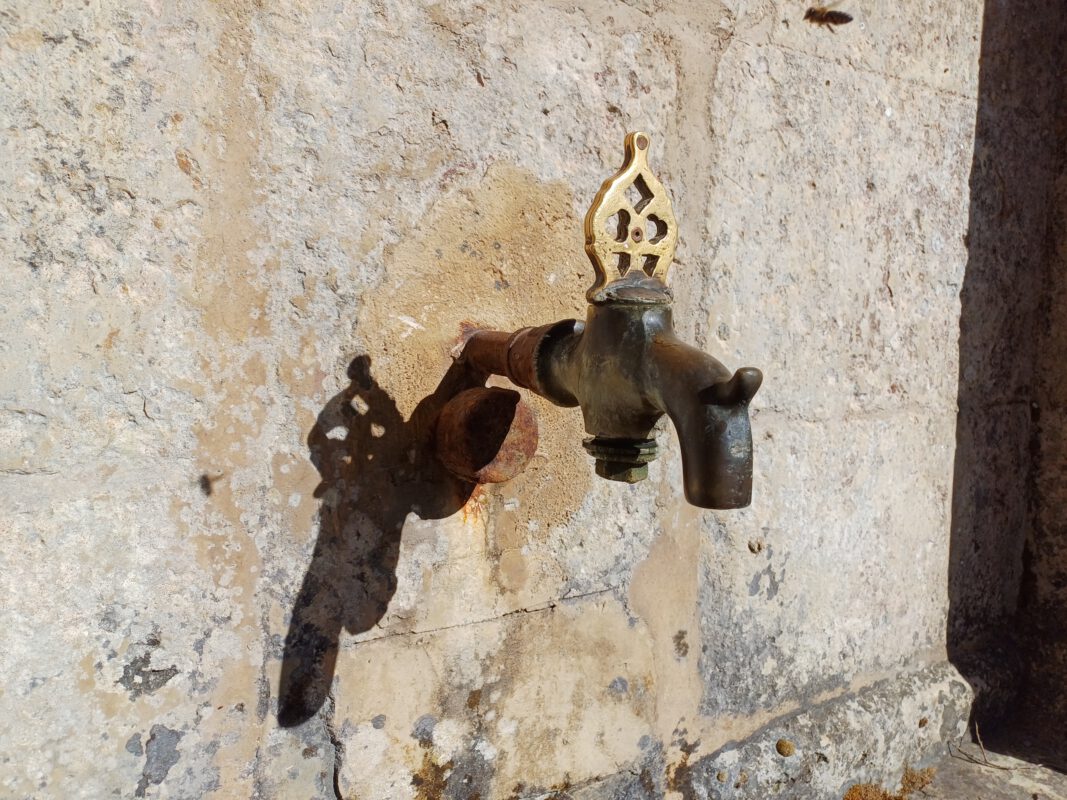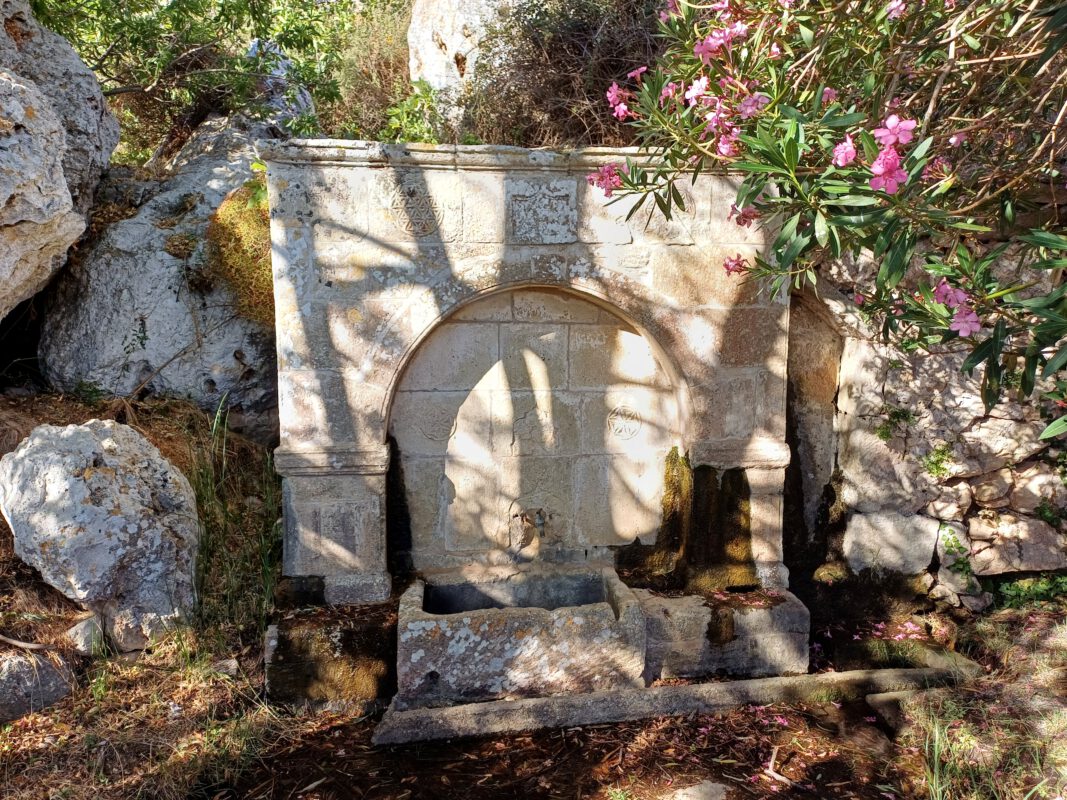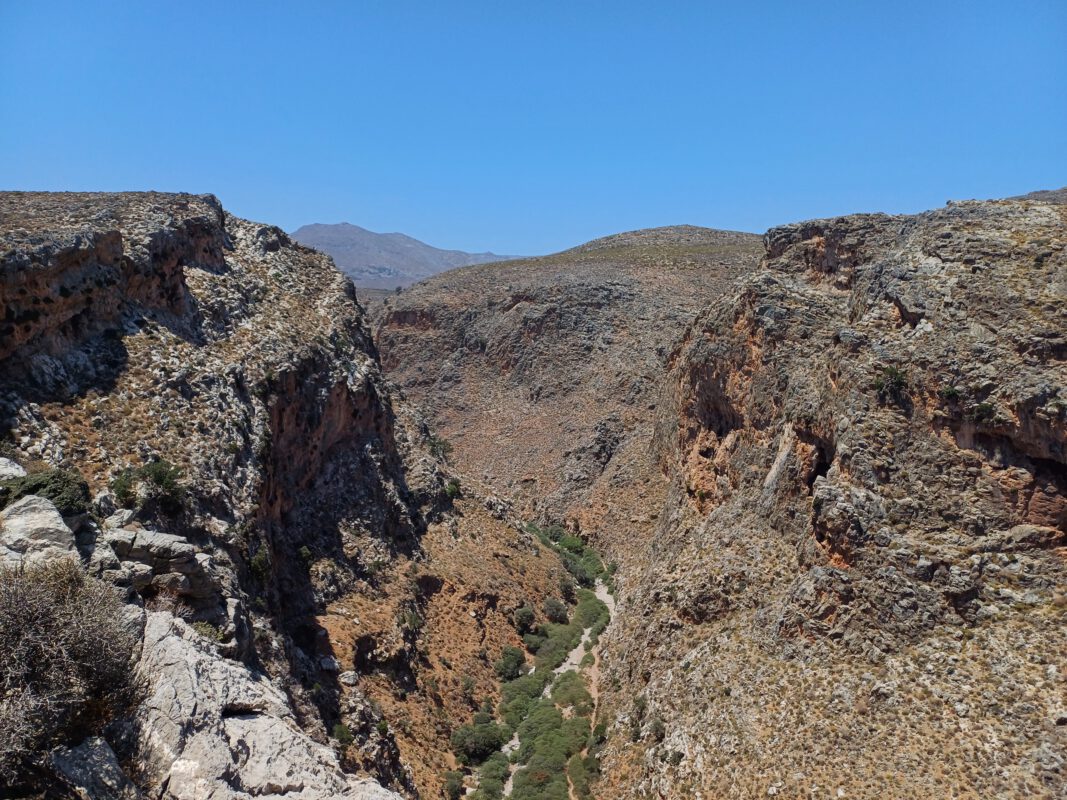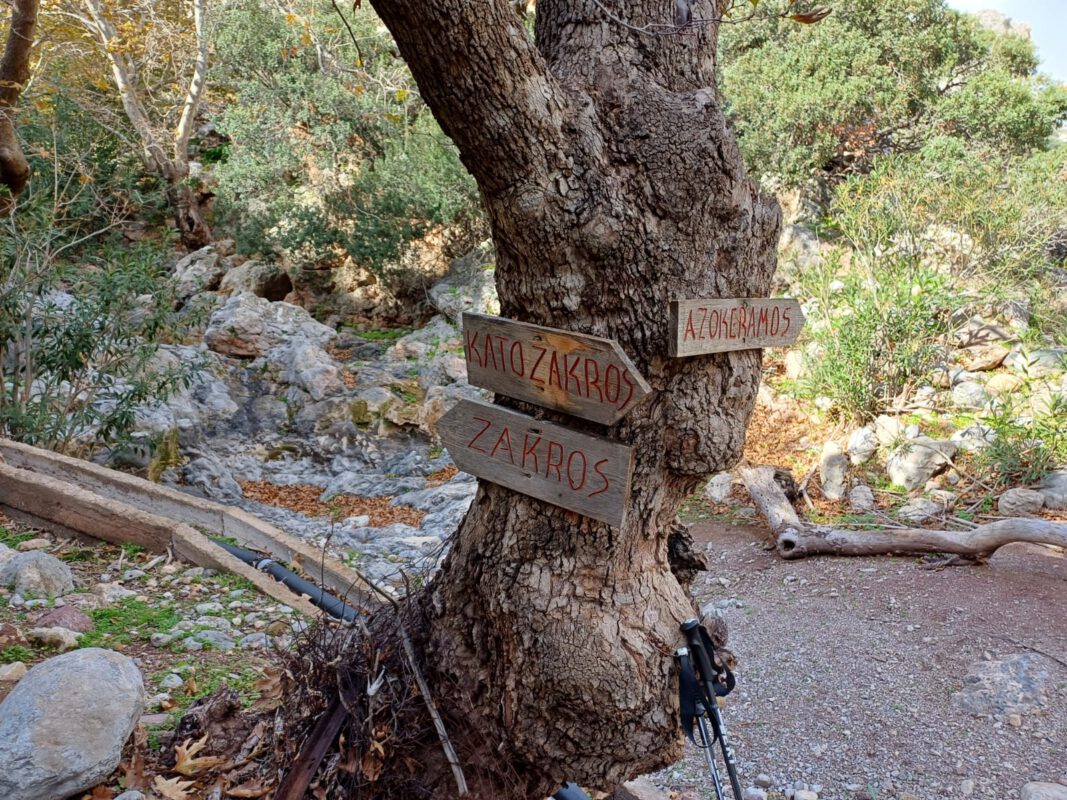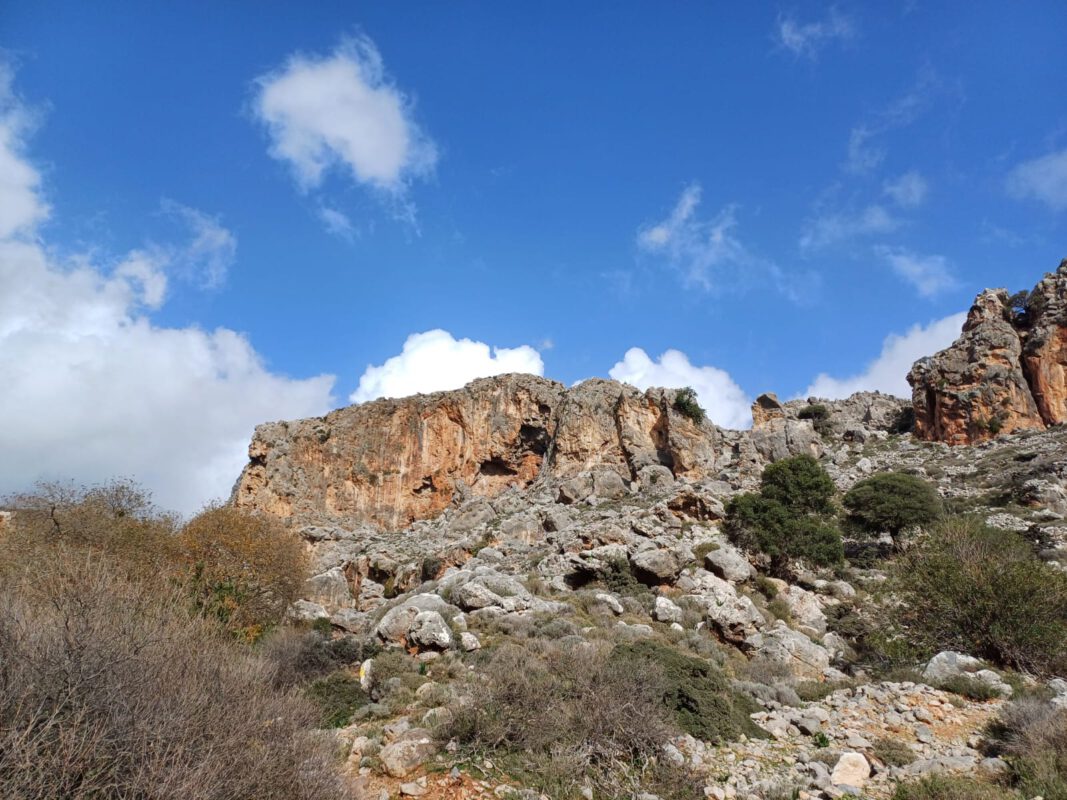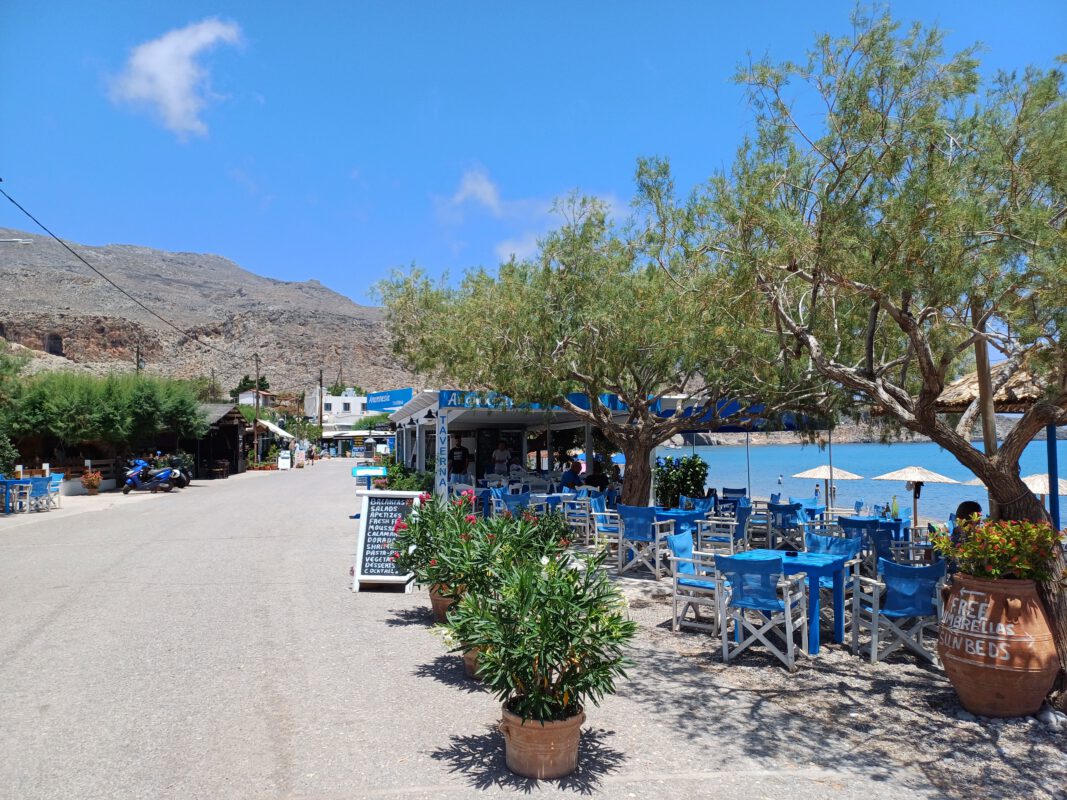Price Includes
- Pickup and drop-off
- SUZUKI VITARA vehicle & fuel
- Experienced driver
- Water
- Trekking poles
Price Excludes
- Any private expenses
- Lunch or snack in a tavern or cafe
Recommended
- Extra walking shoes & socks for the hiking
- Sunscreen / Hat & sunglasses
- Swimsuit / Flip-flops / Sea towels
Note
- Drinking, eating or smoking inside the vehicle is not allowed
- Seat belt use is mandatory
Itinerary
The Zakros Gorge is one of the most spectacular gorges of Crete. Its steep walls of millions-year-old reddish stone interspersed with numerous dark caves hiding ancient Minoan burial grounds will remain for ever in your memory and in your photos. It is because of the said burials that the gorge is known as “the Gorge of the Dead”. What’s more, surprisingly, this nickname is not some recent tourism marketing specialist invention, but was made known to the world by Nikolaos Platon, an archaeologist who conducted the first excavations in the region in the 1960s.
We will pick you up at 8:00 near your hotel or apartment. Depending on your initial location, the drive to the beginning of the Zakros Gorge will take about an hour. We will begin our journey from the gorge because it is better to visit it early, while it is still not very hot.
First we will stop at the observation platform so you could admire the fantastic view from above and maybe take some photos, and then we will drop you off in the Zakros village, at the Β entrance to the gorge, so you could explore it at your own pace. Meanwhile, we will wait for you at the exit of the gorge, in the parking. Hiking through the gorge does not require any special skills as you will be mostly going downwards. The fastest route is 3 kilometres long and takes about an hour. If you wish, it is possible to take the route from the A entrance instead, which it is approx. two times longer. After you have descended to the sea Anabasis-style, rejoice, as not only you have reached the ruins of the most remote Minoan palace in the world, but you have also entered a blue flag awarded beach of Kato Zakros. Apart from swimming in its blue waters, you can also have lunch in one of the many beach taverns – they are surprisingly good for a tourist place, that’s one of the advantages of a holiday in a less frequented area.
After a rest on the shore of Kato Zakros we will start our return trip along the old road to Sitia through the mountains and mountain villages of Karydi, Sitanos and Katelionas. The villages were founded in the 15th–16th centuries and were once bustling with life, but now they are semi-abandoned, and only in the summer people return there occasionally from Sitia or Paleokastro. Time has stopped there. Our main afternoon destination are the medieval ruins of Voila. It is an amazing place where you can wander alone among the old stones, pondering on the shortness of life if you are in the mood or trying to discern the Venetian stonework from the Ottoman or Greek one. The main landmarks of Voila are an ancient tower once housing the mighty Venetian patrician of the Salamon family (although it was rebuilt during the Ottoman period), and a church of Saint George (15th c.) bearing the Venetian coats of arms over the entrance. However, by the beginning of the next century, the foreign lords have already adopted local customs: inside, you will see Greek funerary inscriptions of the Salamon family members and Orthodox frescoes. And do not be surprised to find a wreath or two on the tombs, as the Salamon of Venice and Sitia are the ancestors of Dionysios Solomos from the island of Zakynthos, the Greece’s national poet who wrote the Greek and Cypriot shared national anthem. And when you are tired of history, turn around the corner and you will find an old fountain ready to refresh you with cold spring water.
We will conclude our unforgettable day trip at 16:30–17:00 by bringing you to your accommodation, hopefully pleasantly tired and with lots of great moments behind.
We can pick up our dear guests from their hotel or apartment from any location in the municipality of Sitia and the eastern part of the municipality of Ierapetra, from the Pachia Ammos – Ierapetra road, including Ierapetra town (on the map area highlighted in yellow).
MAP OF THE PICK UP AND VOYAGE AREA
